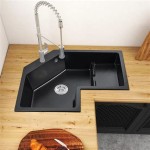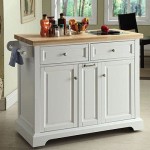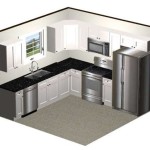How To Organize My Kitchen Cabinets: A Comprehensive Guide
Organizing kitchen cabinets can transform a chaotic and inefficient cooking space into a functional and enjoyable environment. A well-organized kitchen facilitates meal preparation, reduces stress, and maximizes the utilization of available storage.
Effective cabinet organization begins with a comprehensive assessment of current storage practices and a clear understanding of individual needs and preferences. This involves considering the frequency of use for various kitchen items, the available space within the cabinets, and the overall aesthetic desired for the kitchen.
Step 1: Declutter and Inventory
The initial step in organizing kitchen cabinets involves a thorough decluttering process. Remove all items from the cabinets and place them on countertops or tables. This allows for a complete visual assessment of the items and the available space.
Begin by discarding expired food items, broken kitchenware, and duplicates that are no longer needed. Consider donating items that are in good condition but are not frequently used. Be ruthless in this process to maximize the usable space within the cabinets.
Once the decluttering is complete, conduct a comprehensive inventory of the remaining items. Categorize items based on their function: cookware, bakeware, food storage containers, pantry staples, dishes, glassware, and small appliances. This categorization will be crucial in determining the optimal placement of items within the cabinets.
Examine each item for any damage or wear. Items that are damaged but repairable can be set aside for repair, while those that are beyond repair should be discarded. This ensures that only functional and useful items are returned to the cabinets.
Consider grouping items that are used together frequently. For example, measuring cups, spoons, and mixing bowls should be stored in close proximity to facilitate baking activities. Similarly, pots, pans, and cooking utensils should be stored near the stovetop for easy access during meal preparation.
Step 2: Plan and Strategize Cabinet Layout
After decluttering and inventory, the next critical step is to plan the layout of the cabinets. This involves strategically assigning specific areas within the cabinets to different categories of kitchen items. The goal is to optimize space utilization and create a logical and efficient storage system.
Consider the principle of accessibility when planning the layout. Items that are used most frequently should be placed in easily accessible locations, such as lower shelves or cabinets at eye level. Items that are used less frequently can be stored in higher shelves or in less accessible corners of the cabinets.
Analyze the size and shape of different items to determine the most efficient storage method. Tall items, such as bottles and pitchers, may require taller shelves or specialized storage solutions. Small items, such as spices and small utensils, can be organized using drawer dividers or small containers.
Consider the weight of different items when planning the layout. Heavy items, such as cast iron cookware or large appliances, should be placed on lower shelves to prevent strain and potential accidents. Lighter items can be stored on higher shelves without posing a significant risk.
Utilize vertical space within the cabinets by using shelf dividers or risers. These tools can create multiple levels of storage within a single cabinet, maximizing the available space and preventing items from being stacked haphazardly.
Think about workflow. Store plates and bowls near the dishwasher for easy unloading. Place cooking utensils near the stove. Designate a "baking zone" with all necessary ingredients and equipment in one area. This strategic placement will streamline cooking and cleaning processes.
Step 3: Implement Organization Tools and Techniques
The implementation of organization tools and techniques is crucial for maintaining a well-organized kitchen. A variety of tools are available to optimize space utilization, improve accessibility, and enhance the overall aesthetic of the cabinets.
Consider using drawer dividers to separate utensils, cutlery, and other small items within drawers. Drawer dividers prevent items from shifting and becoming disorganized, making it easier to find specific items when needed.
Utilize shelf liners to protect cabinet shelves from spills and stains. Shelf liners also provide a non-slip surface, preventing items from sliding around when the cabinets are opened or closed. Choose liners that are easy to clean and maintain.
Employ clear containers to store pantry staples such as flour, sugar, and grains. Clear containers allow for easy identification of contents and prevent food items from spilling or becoming stale. Label each container clearly to ensure accurate identification.
Install lazy Susans in corner cabinets to maximize accessibility. Lazy Susans allow for easy rotation of items, making it possible to reach items stored in the back of the cabinet without having to remove everything else.
Use pot racks or organizers to store pots and pans vertically. This method saves space and prevents pots and pans from being stacked haphazardly, which can damage their surfaces. Wall-mounted pot racks can free up valuable cabinet space.
Consider using door-mounted organizers to store spices, cleaning supplies, or small kitchen gadgets. Door-mounted organizers utilize the often-unused space on the inside of cabinet doors, providing additional storage capacity.
Utilize under-shelf baskets to create additional storage space for lightweight items such as dishcloths, sponges, or paper towels. These baskets attach to the underside of shelves, providing a convenient and accessible storage solution.
Implement a labeling system to maintain organization. Label shelves, drawers, and containers to clearly identify their contents. This makes it easier for all members of the household to locate items and put them back in their designated places.
By strategically implementing these organization tools and techniques, a chaotic and inefficient kitchen can be transformed into a functional and enjoyable space. The key is to choose tools and techniques that are tailored to individual needs and preferences and to maintain a consistent organizational routine.
Regular maintenance is essential for preserving the organization of kitchen cabinets. Periodically assess the contents of the cabinets and remove any items that are no longer needed or used. Rearrange items as needed to optimize space utilization and accessibility. Wipe down shelves and drawers regularly to prevent the accumulation of dust and grime. With consistent effort, maintaining organized kitchen cabinets can become a manageable and rewarding task.

25 Best Ideas For How To Organize Kitchen Cabinets

How To Organize Your Kitchen Cabinets And Pantry Feed Me Phoebe

How To Organize Your Kitchen Cabinets Step By Project The Container Store

How To Organize Your Kitchen Cabinets In 3 Simple Steps Practical Perfection

How To Organize Your Kitchen Cabinets Step By Project The Container Store

25 Best Ideas For How To Organize Kitchen Cabinets

Inspiring Kitchen Cabinet Organization Ideas Designer Trapped

46 Kitchen Cabinet Organization Ideas Lady Decluttered

How To Organize Kitchen Cabinets Clean And Scentsible

How To Organize Your Kitchen Cabinets And Pantry Feed Me Phoebe








